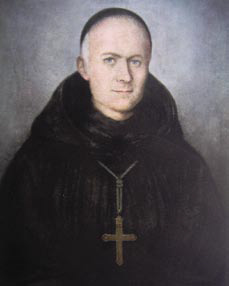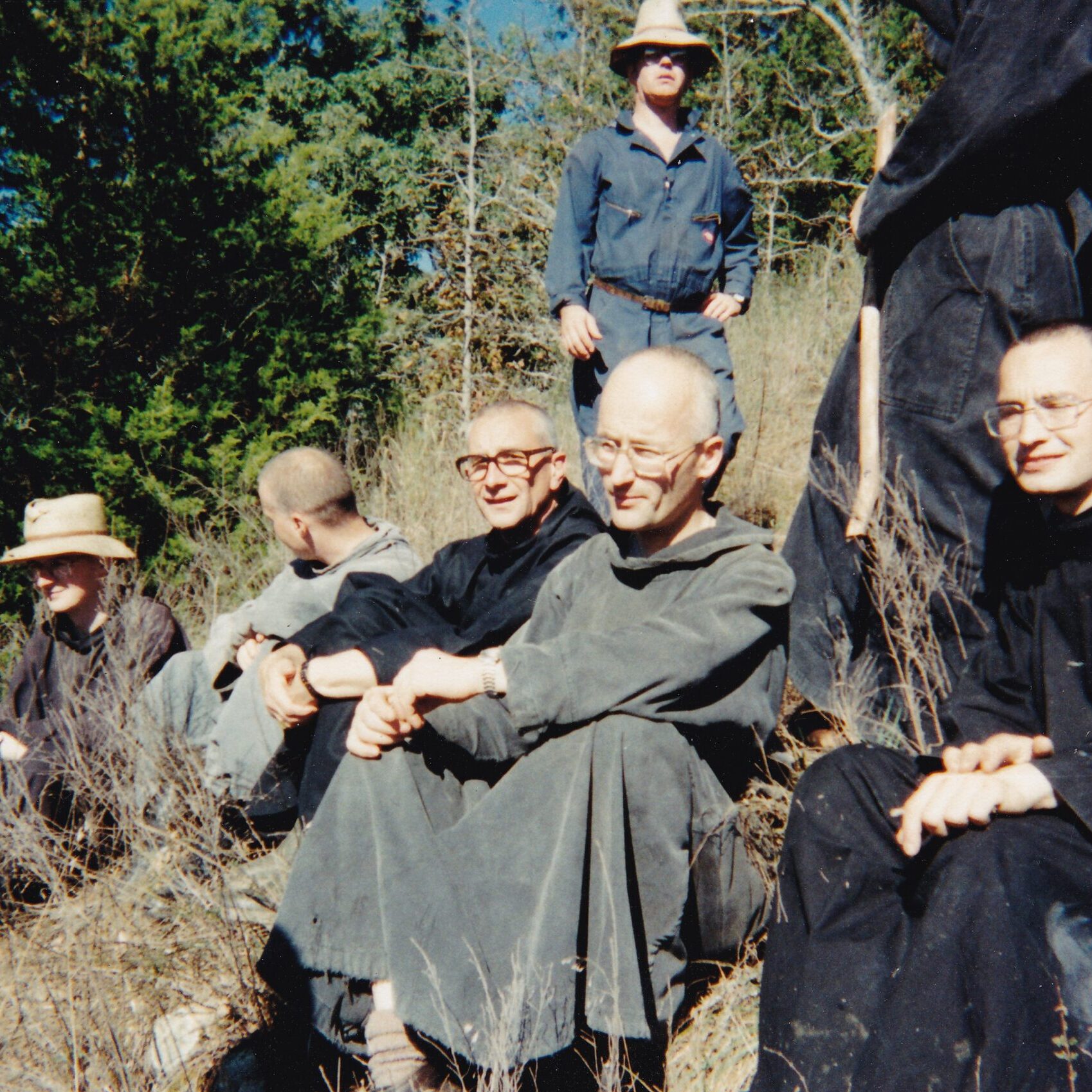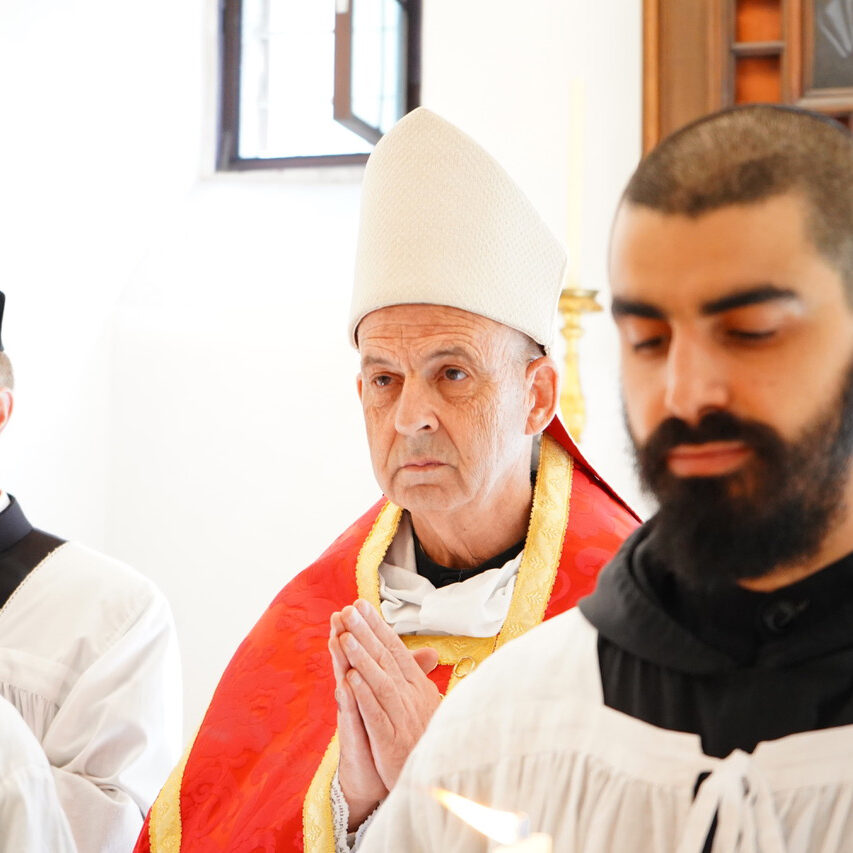Dear Friend of Clear Creek Abbey,
 The abbot of Solesmes was a man of a great and single idea. He had from the start the genial intuition of his mission, and he devoted himself entirely to it: that of restoring to our disinherited age all the scattered treasures of the thousand-year tradition of Christianity, and above all the forgotten riches of antiquity that the Church preserves in her liturgy. Such was the luminous star that guided him in all his ways. And he envisaged this ideal in all its aspects: … the study and the love of liturgical institutions; the pastoral value of the liturgical year and its ever varied teachings; the doctrinal foundations of this theological locus of first order; the treasures of asceticism and of mysticism which the liturgical seasons and the lives of the Saints bring us every day. In sum Dom Guéranger placed himself from the beginning at the center of the temple, and he contemplated its every part and all its elements: he is the unequaled liturgist.
The abbot of Solesmes was a man of a great and single idea. He had from the start the genial intuition of his mission, and he devoted himself entirely to it: that of restoring to our disinherited age all the scattered treasures of the thousand-year tradition of Christianity, and above all the forgotten riches of antiquity that the Church preserves in her liturgy. Such was the luminous star that guided him in all his ways. And he envisaged this ideal in all its aspects: … the study and the love of liturgical institutions; the pastoral value of the liturgical year and its ever varied teachings; the doctrinal foundations of this theological locus of first order; the treasures of asceticism and of mysticism which the liturgical seasons and the lives of the Saints bring us every day. In sum Dom Guéranger placed himself from the beginning at the center of the temple, and he contemplated its every part and all its elements: he is the unequaled liturgist.
Thus spoke Dom Lambert Beauduin, a Belgian monk, a main proponent in the early twentieth century of what has been called the “liturgical movement.” He and many others wanted to continue what Dom Guéranger had begun in France in the preceding century. In fact, as a recent historian has pointed out, the very expression “liturgical movement” was first used by Guéranger, whose influence has proved to be so great even up until our time.
Many Catholics know Dom Guéranger as the author of The Liturgical Year, a guide to the Church’s liturgy that has helped them understand and appreciate the riches of the Roman Catholic liturgy. Many have also heard of the work accomplished by his monks at the Solesmes abbey in France for the restoration of Gregorian chant. We at Clear Creek belong to the Congregation of Solesmes and so partake of this rich heritage.
What some may not know is that this incomparable liturgist was also a saintly monk, whose cause for canonization has begun in the diocese of Le Mans, France, where he lived and died. He is now given the title of “Servant of God.” Dom Guéranger was the friend of saints and popes. Blessed Pope Pius IX, in his Letter of April 10, 1876, wrote, along with many other high praises of Dom Guéranger, the following words:
By his virtue, piety, zeal, knowledge, and by the work of a lifetime, he showed himself to be a true disciple of Saint Benedict and a perfect monk.
A year earlier the same Pope, following the death of Dom Guéranger, had reminded the Church that, both on the occasion of the definition of the Immaculate Conception (1854) and on that of Papal Infallibility (1870), Guéranger had contributed written works “full of faith and sacred learning” that served to uphold the Holy See in making these ex cathedra pronouncements.
Dom Guéranger has had his critics, nevertheless: such seems to be the inevitable lot of anyone who exercises a widespread influence in the world or in the Church. There is no need here to delve into criticisms directly against the abbot of Solesmes. It will suffice to say that theologians often forget that it is not fair to judge those of a different era with the prejudices of our own. Dom Guéranger was certainly a man of the nineteenth century, which had other currents of thought than ours, but he also knew how to look beyond his own time and to see “the forest” beyond this or that “tree,” something his critics do not always seem to be able to do. To treat his work, so highly praised by Popes and by simple faithful, as one such theologian of the twentieth century did, as “sham scholarship” is to forget the test proposed by Our Lord in the Gospel, “By their fruits you shall know them. Do men gather grapes of thorns, or figs of thistles?” (Matt. 7:16).
The principle merit of Dom Prosper Guéranger, although linked to his love of liturgy and Church history, is no doubt of another order. When, in the bloody aftermath of the French Revolution, religious life had been all but snuffed out in France and in much of Europe, this man came forward to restore monastic life and impart a whole new impetus to the Church as it rose from its ashes. Even today on the banks of a small, clear stream in the wilds of Oklahoma, this work of restoration in the best sense of the word continues… We hope you will lend us a helping hand in this effort, whether by material help or through your prayers, which are the most powerful means. I close this letter with a quote from Dom Guéranger:
I am only a monk… . Not a line have I written that was not written under the inspiration of the supernatural; and, if I have some small influence, it is the fruit of this principle of action …
+ br. Philip Anderson, abbot
Dear Friend of Clear Creek Abbey,
 The abbot of Solesmes was a man of a great and single idea. He had from the start the genial intuition of his mission, and he devoted himself entirely to it: that of restoring to our disinherited age all the scattered treasures of the thousand-year tradition of Christianity, and above all the forgotten riches of antiquity that the Church preserves in her liturgy. Such was the luminous star that guided him in all his ways. And he envisaged this ideal in all its aspects: … the study and the love of liturgical institutions; the pastoral value of the liturgical year and its ever varied teachings; the doctrinal foundations of this theological locus of first order; the treasures of asceticism and of mysticism which the liturgical seasons and the lives of the Saints bring us every day. In sum Dom Guéranger placed himself from the beginning at the center of the temple, and he contemplated its every part and all its elements: he is the unequaled liturgist.
The abbot of Solesmes was a man of a great and single idea. He had from the start the genial intuition of his mission, and he devoted himself entirely to it: that of restoring to our disinherited age all the scattered treasures of the thousand-year tradition of Christianity, and above all the forgotten riches of antiquity that the Church preserves in her liturgy. Such was the luminous star that guided him in all his ways. And he envisaged this ideal in all its aspects: … the study and the love of liturgical institutions; the pastoral value of the liturgical year and its ever varied teachings; the doctrinal foundations of this theological locus of first order; the treasures of asceticism and of mysticism which the liturgical seasons and the lives of the Saints bring us every day. In sum Dom Guéranger placed himself from the beginning at the center of the temple, and he contemplated its every part and all its elements: he is the unequaled liturgist.
Thus spoke Dom Lambert Beauduin, a Belgian monk, a main proponent in the early twentieth century of what has been called the “liturgical movement.” He and many others wanted to continue what Dom Guéranger had begun in France in the preceding century. In fact, as a recent historian has pointed out, the very expression “liturgical movement” was first used by Guéranger, whose influence has proved to be so great even up until our time.
Many Catholics know Dom Guéranger as the author of The Liturgical Year, a guide to the Church’s liturgy that has helped them understand and appreciate the riches of the Roman Catholic liturgy. Many have also heard of the work accomplished by his monks at the Solesmes abbey in France for the restoration of Gregorian chant. We at Clear Creek belong to the Congregation of Solesmes and so partake of this rich heritage.
What some may not know is that this incomparable liturgist was also a saintly monk, whose cause for canonization has begun in the diocese of Le Mans, France, where he lived and died. He is now given the title of “Servant of God.” Dom Guéranger was the friend of saints and popes. Blessed Pope Pius IX, in his Letter of April 10, 1876, wrote, along with many other high praises of Dom Guéranger, the following words:
By his virtue, piety, zeal, knowledge, and by the work of a lifetime, he showed himself to be a true disciple of Saint Benedict and a perfect monk.
A year earlier the same Pope, following the death of Dom Guéranger, had reminded the Church that, both on the occasion of the definition of the Immaculate Conception (1854) and on that of Papal Infallibility (1870), Guéranger had contributed written works “full of faith and sacred learning” that served to uphold the Holy See in making these ex cathedra pronouncements.
Dom Guéranger has had his critics, nevertheless: such seems to be the inevitable lot of anyone who exercises a widespread influence in the world or in the Church. There is no need here to delve into criticisms directly against the abbot of Solesmes. It will suffice to say that theologians often forget that it is not fair to judge those of a different era with the prejudices of our own. Dom Guéranger was certainly a man of the nineteenth century, which had other currents of thought than ours, but he also knew how to look beyond his own time and to see “the forest” beyond this or that “tree,” something his critics do not always seem to be able to do. To treat his work, so highly praised by Popes and by simple faithful, as one such theologian of the twentieth century did, as “sham scholarship” is to forget the test proposed by Our Lord in the Gospel, “By their fruits you shall know them. Do men gather grapes of thorns, or figs of thistles?” (Matt. 7:16).
The principle merit of Dom Prosper Guéranger, although linked to his love of liturgy and Church history, is no doubt of another order. When, in the bloody aftermath of the French Revolution, religious life had been all but snuffed out in France and in much of Europe, this man came forward to restore monastic life and impart a whole new impetus to the Church as it rose from its ashes. Even today on the banks of a small, clear stream in the wilds of Oklahoma, this work of restoration in the best sense of the word continues… We hope you will lend us a helping hand in this effort, whether by material help or through your prayers, which are the most powerful means. I close this letter with a quote from Dom Guéranger:
I am only a monk… . Not a line have I written that was not written under the inspiration of the supernatural; and, if I have some small influence, it is the fruit of this principle of action …
+ br. Philip Anderson, abbot






